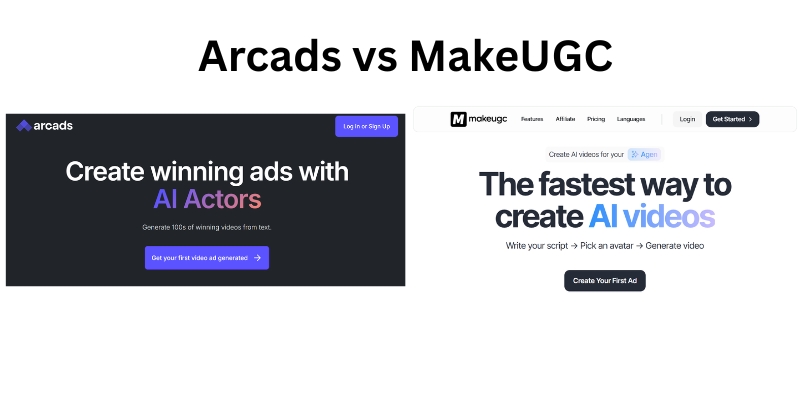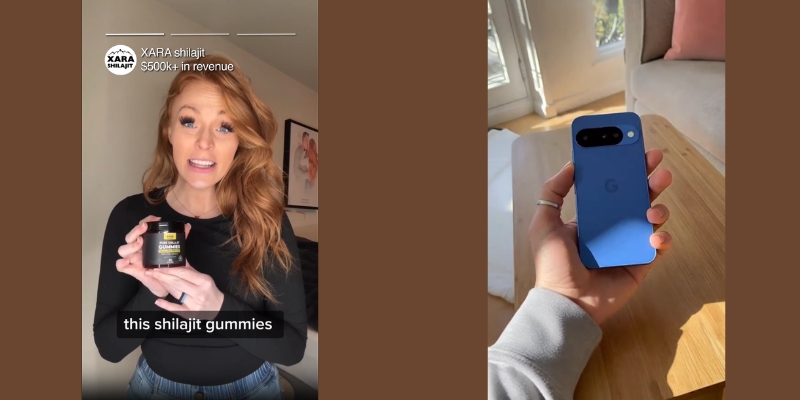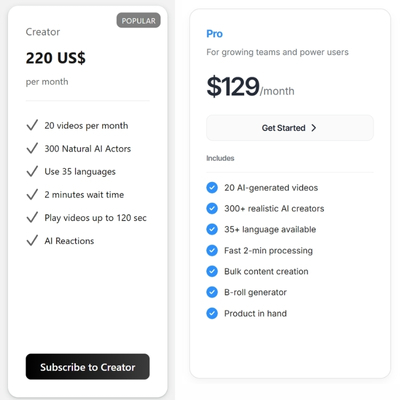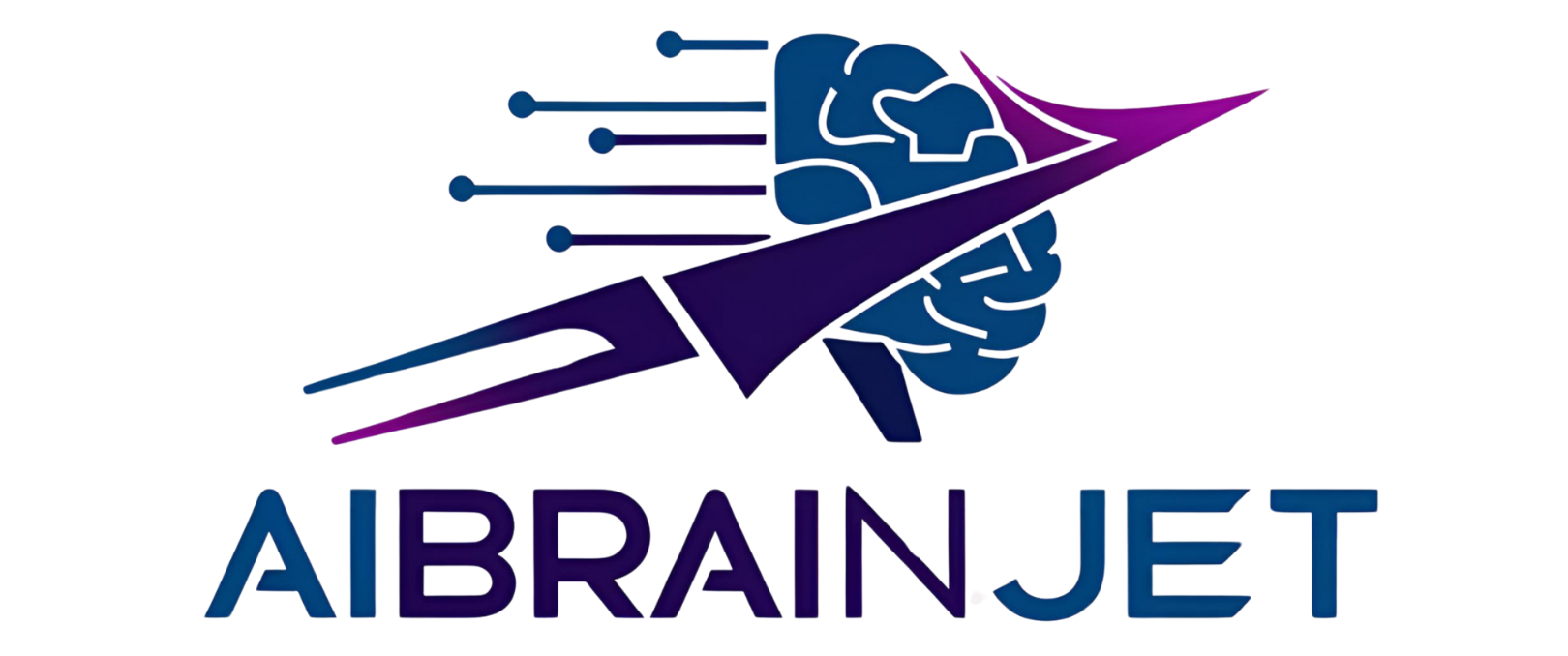Arcads vs MakeUGC : Which AI UGC Tool Creates Better Video Ads in 2025?

Introduction
The AI-powered User-Generated Content (UGC) ad market has matured. Marketers no longer ask if they should use AI but which tool to invest in. Two of the most advanced platforms available today are Arcads and MakeUGC (often called MagicUGC).
Choosing between them is difficult because they look similar but are built on two fundamentally different philosophies. Arcads is a high-performance asset generator for marketers who need to batch-test scripts and actors at scale. MakeUGC is an all-in-one solution designed to take e-commerce brands from a blank page to a finished, product-focused ad in minutes.
Choosing the wrong one will lead to workflow frustration and wasted ad spend. As AI video analysts, we have done a hands-on comparison of the latest 2025 versions of both platforms. We tested the full workflow, from scripting to product placement, to help you move from “I’m not sure which is better” to “I am confident in my choice.”
Quick Comparison: Arcads vs MakeUGC (2025 Edition)
Before the deep dive, here is a high-level breakdown based on the newest 2025 features. This table directly answers the most common questions.
| Feature | Arcads | MakeUGC (MagicUGC) |
| Best For | Performance Marketers & Agencies | E-commerce Brands & Solopreneurs |
| Core Workflow | Talking-Head Asset Generation | All-in-One Ad Creation |
| AI Scriptwriter | No (Must provide your own script) | Yes (Built-in script & hook generator) |
| Product Placement | Limited (Beta “Unbox POV” / Pro Plan) | Yes (Core “Product in Hand” feature) |
| Batch Creation | Yes (Core feature, CSV-based) | Yes (Core feature on all plans) |
| Voice Cloning | Yes (Advanced Speech-to-Speech) | No (Uses ElevenLabs integration on MAX plan) |
| In-App Editing | No (Must export to edit) | Limited (Simple, form-based) |
| Pricing Model | Tiered Subscription (Starts at 10 videos) | Tiered Subscription (Starts at 10 videos) |
| Free Trial | No Free Trial | No Free Trial |
Workflow Showdown: We Create the Same Ad in Both Tools
To provide a true, hands-on (E-E-A-T) comparison, we ran the same ad concept for a skincare serum through both platforms. The differences in workflow were clear from the very first click.
Step 1: Scripting and Idea Generation
- MakeUGC: The workflow starts inside the app. MakeUGC has a built-in AI Script Writer. We provided a product name and description, and it generated three different ad scripts complete with “scroll-stopping” hooks. This is a massive time-saver for e-commerce owners who aren’t professional copywriters.
- Arcads: The workflow starts before you even open the app. Arcads assumes you already have a finalized, tested script. It does not have an AI scriptwriter. This is intentional—it’s built for performance marketers who are A/B testing their own pre-written copy.
Step 2: Product Placement: The “Product in Hand” Test
This is the most critical difference for e-commerce brands.
- MakeUGC: This is its main selling point. The “Product in Hand” feature is a core part of the workflow. You upload a photo of your product, and the AI avatar will hold it and gesture with it. In our test, this worked impressively well, adding a layer of realism that’s crucial for product ads. Crucially, this feature is only available on the “Pro” plan ($129/mo) and up.
- Arcads: This is more complicated. The main “Talking Actor” workflow cannot hold products. Instead, Arcads offers two workarounds: a beta feature called “Unbox POV” that creates separate B-roll clips of hands unboxing your product, and a “My Cloned Actors” feature for high-tier Pro users that can reportedly hold items. For the vast majority of users, the workflow is to export the talking-head video and add product B-roll in a separate editor like CapCut.

Step 3: Batch Creation & A/B Testing
Both tools now offer batch creation, but they are designed for different goals.
- Arcads: Arcads’ “Batch Creation” is built for testing variables. You can upload one script and test it against 10 different actors, or upload 10 script hooks and test them with one actor. This is a powerful A/B testing system for performance marketers.
- MakeUGC: MakeUGC’s “Bulk content creation” is simpler and built for production. It’s designed to help you quickly produce many videos, but its interface is less focused on the methodical A/B testing of single variables.
Step 4: Editing and Final Output
- Arcads: The final output from Arcads is a high-quality “clean talking-head clip”. There is no in-app editor. You must export the video and use a third-party tool to add captions, B-roll (like the “Unbox POV” clips), and music. This is a pro-level workflow that offers full control.
- MakeUGC: The final output is a near-finished ad. It has a simple, form-based editor where you can add text overlays, but it has no complex timeline. It also has a “B-roll generator” to create simple clips from photos. It’s fast, but you sacrifice the deep creative control that Arcads’ workflow provides.
Pricing & ROI: A Surprising 2025 Showdown
The old “credits vs. subscription” debate is over. As of 2025, both platforms have moved to nearly identical tiered subscription models, and neither offers a free trial. The best choice now comes down to cost-per-video and which features are unlocked.
The Arcads Pricing Model
- Starter Plan: ~$110/month for 10 videos (Cost: $11 per video)
- Creator Plan: ~$220/month for 20 videos (Cost: $11 per video)
- Details: Includes batch creation and voice cloning. Does not include the advanced “product-in-hand” cloned actors.
The MakeUGC (MagicUGC) Pricing Model
- Basic Plan: ~$79/month for 10 videos (Cost: $7.90 per video)
- Pro Plan: ~$129/month for 20 videos (Cost: $6.45 per video)
- Details: The Basic plan includes the AI scriptwriter and bulk creation. You must upgrade to the Pro plan to unlock the “Product in Hand” feature.

Cost-per-Video & Feature Scenario
Let’s put this into a real-world context for an e-commerce brand.
- Your Goal: Create 20 high-quality ads that show your product.
- MakeUGC Cost: You must use the Pro Plan. Your cost is $129.
- Arcads Cost: You must use the Creator Plan. Your cost is $220. You then still have to spend time in a separate video editor to add your product shots, as this plan doesn’t include the advanced product-holding actors.
Winner: For the most common e-commerce use case, MakeUGC is significantly more cost-effective and provides the critical product-in-hand feature in a single workflow.
Final Verdict: Who Should Choose Arcads vs MakeUGC?
This is the final step to help you move from “unsure” to “confident.” Based on our hands-on analysis of the 2025 versions, the choice is clearer than ever.
Choose Arcads if…
- You are a performance marketer or a data-driven ad agency.
- Your primary goal is A/B testing pre-written scripts and ad hooks at scale using the advanced Batch Creation feature.
- You have a dedicated video editor (or are one yourself) and prefer to finalize your ads in tools like CapCut or Adobe Premiere.
- You need best-in-class voice cloning (Speech-to-Speech) for a consistent brand voice.
Curious if Arcads’ pro-level workflow is right for your agency? We tested its batch creation and voice cloning. See the final verdict in our unbiased 2025 Arcads Review.
Choose MakeUGC (MagicUGC) if…
- You are an e-commerce brand, solopreneur, or small agency.
- You need an all-in-one tool that includes an AI scriptwriter to help you generate ideas and copy.
- Your ads must show your product. The “Product in Hand” feature is essential to your strategy (and you are willing to pay for the Pro plan).
- You want the best value (cost-per-video) and prefer a simple, fast workflow over complex editing control.
Wondering if MakeUGC is the best all-in-one tool for your brand? We tested its AI scriptwriter and “Product in Hand” feature. Get the full story in our in-depth 2025 MakeUGC Review.
Conclusion
There is no single “best” tool, only the best tool for your specific workflow.
Our 2025 testing confirms the fundamental split: Arcads is a specialized asset generator for technical marketers who live in spreadsheets and video editors. MakeUGC is a complete ad solution for e-commerce brands who need to get a product-focused video from idea to “ready-to-publish” as quickly and cost-effectively as possible.
Our Final Recommendation: For the vast majority of users—e-commerce brands, small businesses, and marketers who need to create ads that actually show their product—MakeUGC’s Pro plan offers a faster, more complete, and more affordable solution. The inclusion of the AI scriptwriter and the “Product in Hand” feature in one workflow is a clear winner.
Get Started
- Ready for an all-in-one solution? Explore MakeUGC’s Pro Plan to get “Product in Hand“
- Ready to scale your A/B testing? See the Arcads workflow and pricing
Frequently Asked Questions (FAQ)
1. Is Arcads or MakeUGC better for realistic AI actors?Both are in the top tier of realism for 2025. Arcads offers more “influencer-style” actors and advanced voice cloning. MakeUGC’s actors are excellent and integrate directly with the “Product in Hand” feature.
2. Can Arcads show my product in the video?Not in its main workflow. You must use a separate beta feature (“Unbox POV”) for B-roll or be a high-tier Pro user with “My Cloned Actors”. The standard workflow is to export and edit the product in yourself.
3. Does MakeUGC “Product in Hand” work on the basic plan?No. This is a critical point. The “Product in Hand” feature is only available on the Pro plan ($129/mo) and higher.
4. Which tool is cheaper in 2025?MakeUGC is cheaper on a per-video basis. Its 10-video plan is $7.90/video, while Arcads’ 10-video plan is $11/video. MakeUGC’s 20-video plan is also significantly cheaper than Arcads’ 20-video plan.
5. Do Arcads or MakeUGC have a free trial?No. As of our latest 2025 review, neither platform offers a free trial. Both require you to sign up for a paid plan to use the service.
6. Which tool is better for batch creation?It depends on your goal. Arcads is better for A/B testing variables (e.g., 10 scripts, 1 actor). MakeUGC is better for bulk production (e.g., creating 10 complete videos quickly)

